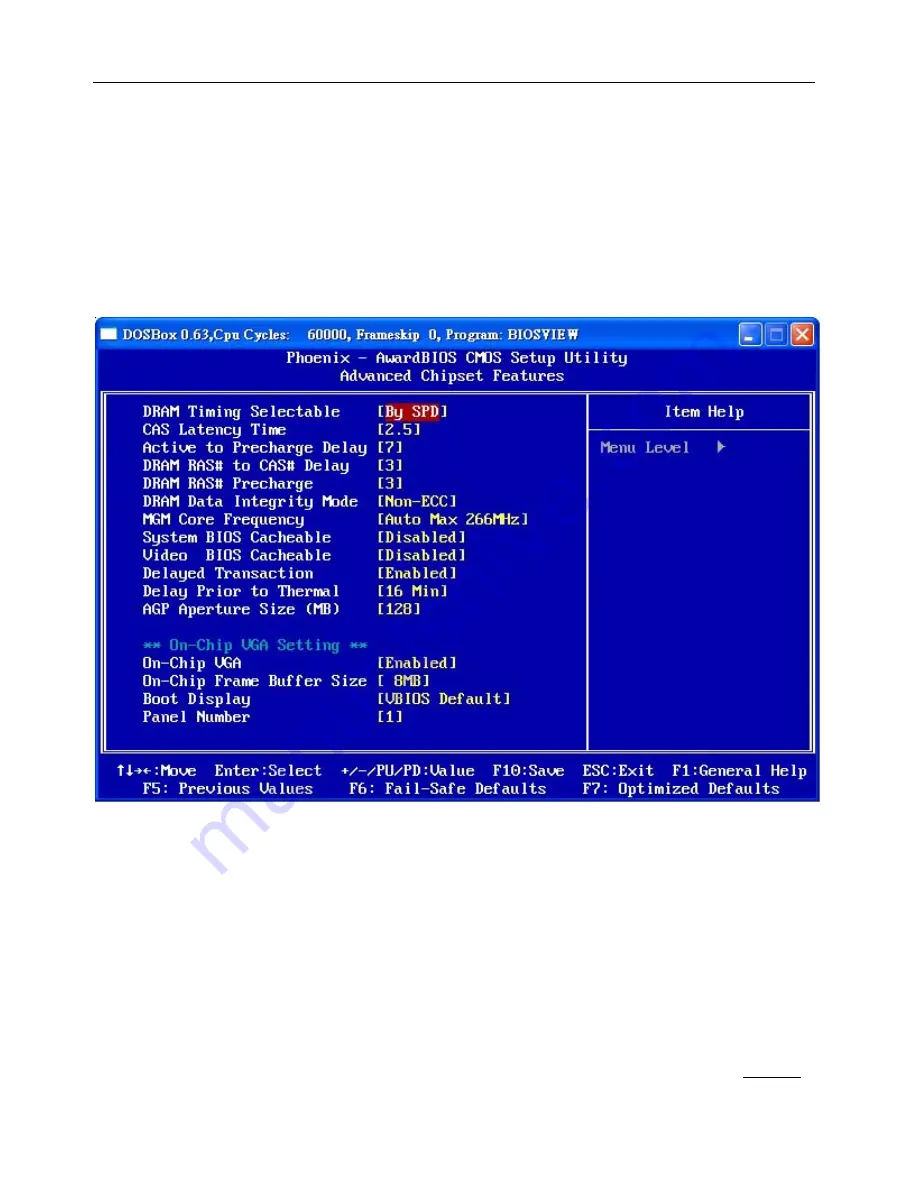
PEB-7605 Series User’s Manual
22
MPS Version Control for OS
The 1.1 version is the older version that supports 8 more IRQs in the Windows NT environment. Choose the new 1.4 version for
Windows 2000 and Windows XP. Options: 1.4 (default)
、
1.1
OS Select For DRAM > 64MB
IBM’s relic. If your system's DRAM is larger than 64MB and you are running OS/2, select OS/2 as the item value. Otherwise,
set the item value to Non-OS/2 for all other operating systems.
Report No FDD For Win95
The original Windows 95 requires the presence of a floppy. Unless the BIOS tells it to disregard the absence of the drive , it will
generate an error message. For other operating systems as Win98 etc this field is without relevance.
4.5 Advanced Chipset Features
DRAM Timing Selectable
This item determines DRAM clock/timing using SPD or manual configuration. Make sure your memory module has SPD
(Serial Presence Data), if you want to select the “
By SPD
” option. Options: Manual
、
By SPD (default)
CAS Latency Time
CAS is short for column address strobe, which is a kind of signals. When the CPU needs data from SDRAM, CAS signals will
be sent via the CAS line to specify the column where the data is needed. This controls the time delay (in clock cycles - CLKs)
that passes before the SDRAM starts to carry out a read command after receiving it. This also determines the number of CLKs
for the completion of the first part of a burst transfer. In other words, the lower the latency, the faster the transaction.
Note that some SDRAM modules may not be able to handle the lower latency and will become unstable and lose data.
Therefore, set the DRAM CAS Latency Time to
2
for optimal performance if possible but increase it to
2.5
if your system
becomes unstable.
Interestingly, increasing the CAS latency time does have an advantage in that it will enable the SDRAM to run at a higher
clockspeed, thereby giving you an edge in overclocking your system. So, if you hit a snag while overclocking, try increasing the





























